LED optics are the components that optimize the direction, distribution and intensity of light emitted by LEDs in line with the intended purpose. Although the lenses are the first circuit elements that comes to mind when it comes to LED optics, there are many types of optical components other than lenses.
The small protective dome that we see on the LED is a primary optic element that protects and shapes the LED’s light. The light coming from the primary optics of the LED still lacks intensity over a very wide distance in most applications. For this reason, most LED fixtures use secondary optics (lenses, reflectors, TIR optics, etc.) to collect this light and magnify its intensity towards the target.
LEDs emit light in a much different way than other light sources. For example, the light spreads 360° in incandescent bulbs, while LEDs provide directional lighting. That is, they emit light along a certain degree of circular segment, and since there is a bottom base on the back side of the chip, this illumination angle cannot exceed 180°.
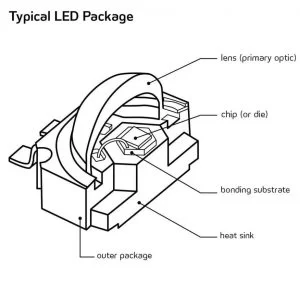
What are the Types of LED Optics?
Primary Optics
The term “primary optics” refers to optical components that are placed or mounted directly on the LED surface to control the light output of LEDs. These components direct, distribute or intensify the light coming out of the LED. The primary optics help to shape and optimize the light output of the LEDs in the desired way.
The concept of “Typical Spatial Distribution”, which the manufacturers use to describe the light coming from the primary optics of the LED, usually refers to the shape or propagation of the light coming from the center of the diode. For instance, the Cree XP-G2 series products provide a propagation of 115°. This indicates to a distribution angle that reaches 57.5 degrees on both sides. However, the same lumen value cannot be obtained at every point of the distribution angle. The closer you are to the center, the stronger the light will be. This is also clearly indicated in the ‘Typical Spatial Distribution’ graph of the Cree XP-G2 series.

Secondary Optics
Extra optical products in addition to the lens on the diode are needed in some LED applications that require a high power, such as indoor spot/lighting, street lighting, architectural lighting and spot lighting, etc. The reason for this is that the emitter and primary optics alone cannot provide sufficient density to the target surface such applications. In other words, LEDs in such applications need to be more focused. Secondary optics are used in such a way that they fully focus on the actual required area.
Secondary optics are used not only to direct light, but also sometimes to improve color unity and light distribution within the targeted area. Choosing the appropriate optical or lens depends on the application. Reflectors and TIR optics are used in many different applications, and both have some specific advantages and disadvantages.
TIR (Total Internal Reflection) Optics
Total Internal Reflection (TIR) optics or lenses are usually manufactured by injection molding process from polymers and use a breaker lens inside a reflector. They are usually cone-shaped and can offer very high efficiencies in reflecting and controlling the light of the LED. Typically, the lens directs the light from the center of the emitter to the reflector, which sends it out as a narrow or wide beam, as the case requires.
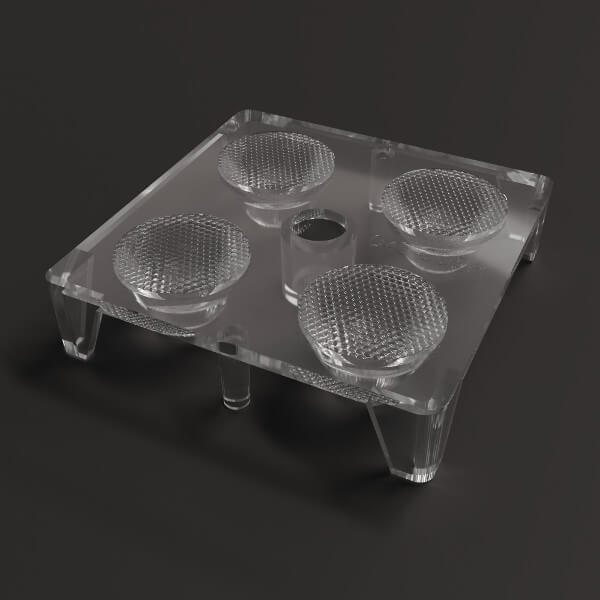
More surfaces on top of the assembly provide the ability to change the light. These surface treatments (wavy, dull, polished, etc.) are used to spread or expand the light, or shape its distribution.
The TIR optics work perfectly with LEDs, since they take advantage of the characteristics of the emitters. While the other forms of light radiate the heat outwards the LEDs send it outwards from their bases, which allows these TIR optics to fit securely and surround the dome completely. This provides much more control, as it provides the ability to directly illuminate and control from the source of the light.
While the TIR optics are widely used in outdoor lighting, they have also been improved to be suitable for indoor applications as well. They are ideal for narrow beam control but do not work that well in the places with scattered light and low glare.
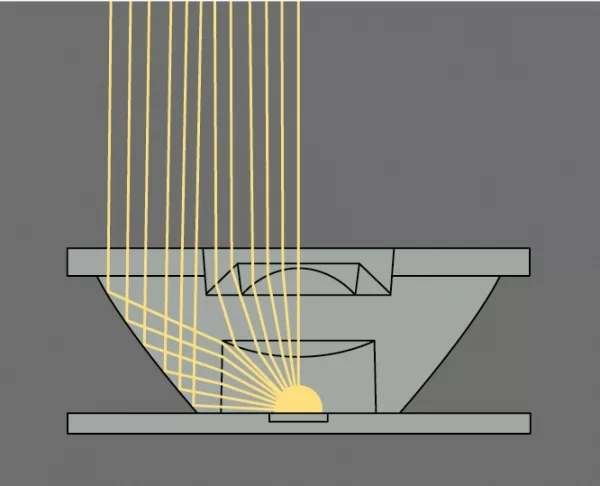
Reflectors
Reflectors can be applied much easier than TIR (Total Internal Reflection) optics and their manufacturing cost is much lower. Their ability to collect and direct light depends on their shape. The physical dimensions of the light often limit the options for optics. When used with Chip-on Board (COB) arrays or emitters they emit to such a large area that the only real solution will be to surround them with a reflector.
The reflectors are used in most incandescent lights, while there is a major disadvantage when they are used in LEDs: Most rays coming from the center of the emitter exit the system without even touching the reflector. This causes a significant part of the light to go out of the target, even with a narrow reflective system. This causes a lost lumen output or creates an undesired brightness.
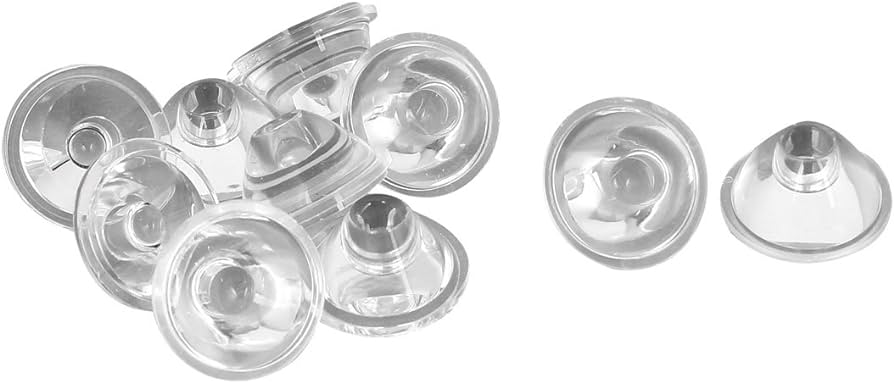
For this reason, it has become a common practice to cover with a TIR lens to direct all the light to the target, especially with the development of high-lumen density emitters.
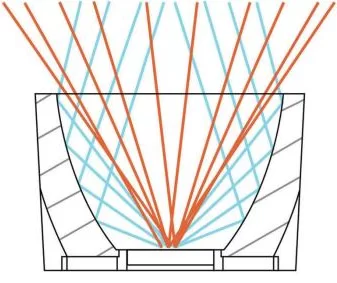
Areas of Use of LED Optics
- Lighting Systems: The LED lamps, fixtures and other lighting systems use LED lenses to ensure that the light spreads in the right direction and in the desired way.
- Automotive Lighting: The LED lenses are used in automotive lighting systems such as car headlights and taillights. These lenses direct the light to illuminate the surrounding of the vehicle or display the traffic signs.
- Imaging and Display Technologies: The LED screens and display technologies can improve the image quality and ensure the homogeneous distribution of light by using LED lenses.
- Optical Sensors: In optical sensors, the LED lenses accurately collect light and improve the detection processes.
- Medical Devices: Some medical devices and equipment use LED lenses to direct light in diagnose or treatment processes.
- Security Cameras: The LED lenses in security cameras and monitoring systems are used for improving the image quality and ensure that the light is focused on the correct direction.





